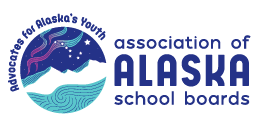LEO and E-Rate

Pete Vraspir, Lynx Alaska
The E-Rate season is upon us! For those that don’t know, E-Rate is a federal program that provides schools and libraries with money for internet connections. I know most of you have been thinking and working on RFPs for months already, but I think this year brings an interesting disruptor and option to the mix. LEO (low earth orbit) satellite companies have really begun to change the landscape of rural areas around the globe and certainly here in Alaska. Of course the big player is Starlink.
This year school districts are taking a hard look at Starlink in particular. The math is easy because Starlink is so affordable, especially compared to what has been available. For the first time we find some of our students in the rural villages actually have internet at home! This is a first for many of the families in rural Alaska as well as other very remote areas around the world. So why wouldn’t schools consider going this direction? Its a great question with lots to consider. Here are some thoughts on the current state of this service.
Currently, while Starlink has applied for and gotten in to the E-Rate program, they do not currently plan to sell their service directly to public schools. They have instead elected to sell it through third parties. Many of the big ISPs (internet service providers) in the state will either provide some sort of Starlink add-on service or will participate as a reseller. A district with small schools could provide internet at a fraction of the cost compared to the traditional internet schools around the state have purchased. So why isn’t this more prevalent? We are in the infancy of this technology and there may be some good reasons to wait.
First, there is no guaranteed service level with Starlink for any customer. Internet can go down and there really isn’t anything anyone can do about it. Most current school district internet providers offer some level of service guarantee and if they don’t deliver, they often reimburse for any disruption longer than 4 hours. There is no such guarantee from Starlink and there is no refund. There is also little to no support, especially not at the scale schools are used to. Imagine the internet going down during testing? There wouldn’t be anything to do but wait.
Currently, Starlink provides few services that many districts have become accustomed to. There are no firewall services, no filtering services, and very little support services. Schools and districts would be responsible for all onsite equipment – some of the current providers support onsite equipment. For a school/district to be CIPA (Child Internet Protection Act) compliant, all those services would have to be provided and managed by the district. So why would a school or district decide to go this way? Really its one reason – cost.
When you can put a Starlink unit on your small school (maybe 20-30 students) you can provide more bandwidth at a fraction of the cost! Without even considering E-Rate, schools could pay less out of pocket than their current 10% portion they might pay. As an example, the state’s small, rural districts might pay 10% of a monthly $100,000 bill which is $10,000/month. Two Starlink units on a small school would cost the district $2500 up front and about $500-$1000/month for the best service. The whole year of Starlink costs less than 2 months of the current service. That’s easy math.
Just remember now the district must provide CIPA compliant filtering, will have to manage onsite equipment and be ready for surprise and unscheduled outages. This will decrease over time as more and more satellites are added to the service. Its a good bet that much of this will change and our rural districts and students may finally have comparable internet access to their lower-48 counterparts. Equity in access may truly be coming!
If you want to discuss this more or have additional questions, reach out to us here at Lynx. We try to keep up on the subjects that matter to you. We can help with consulting and advice or even help you manage some of the services you may need to if your school or district decides to switch to a LEO solution. Let us know how we can help!
Email | (888) 977-0790 ext. 102 | Lynx website

